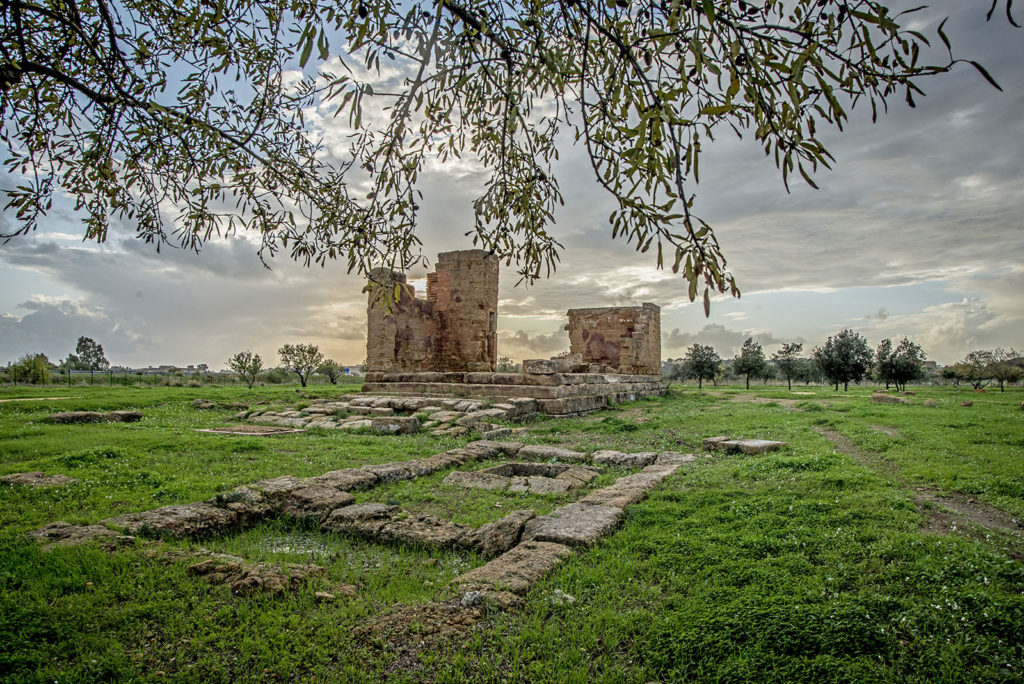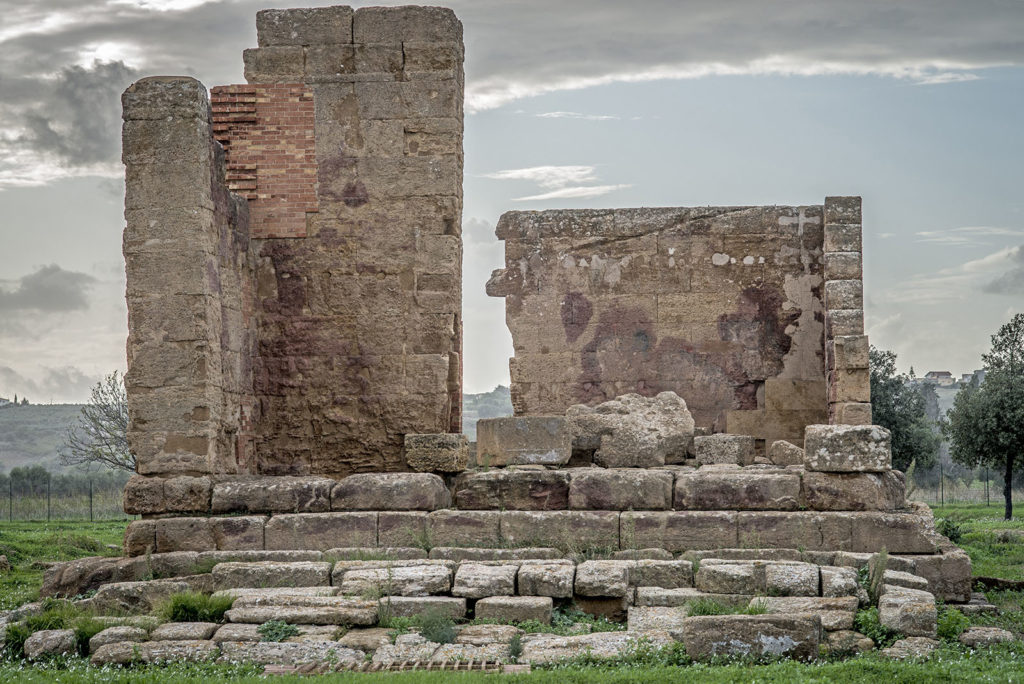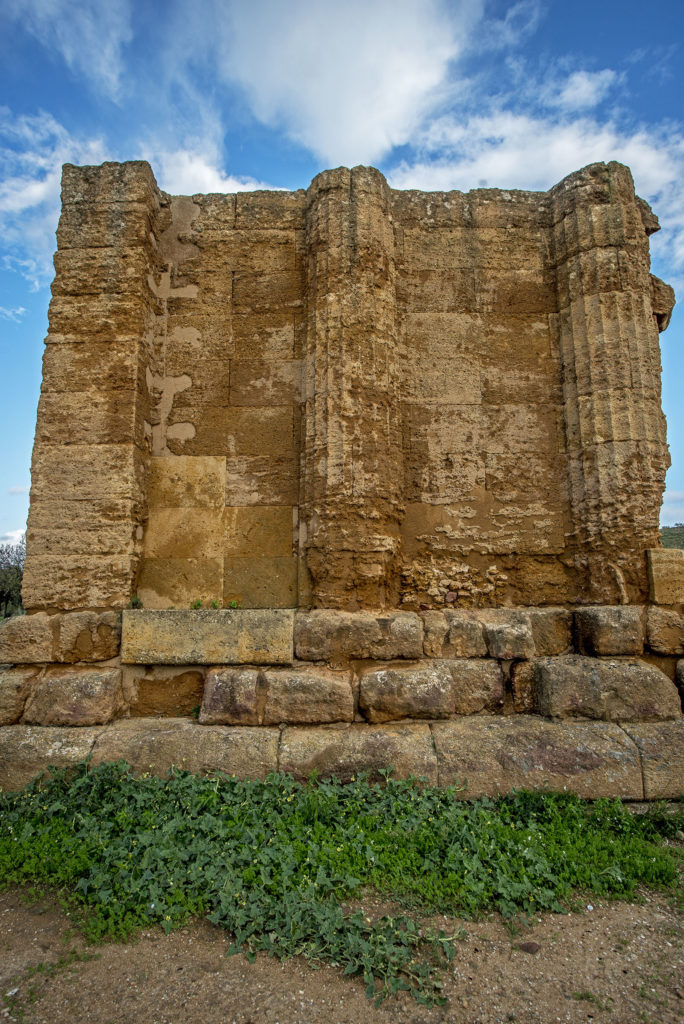The monumental sacred complex dedicated to
Asclepius
was located in the Piana di San Gregorio (Plain of St. Gregory) outside the walls of ancient Akragas. Already in the 6th century BC the site was frequented as a place of worship of the god Apollo Medicus, father of Asclepius.
Inside the temple there was a statue dedicated to this deity, who was also linked to the medical arts, which bore on one thigh the name of its creator, Mirone, engraved in silver lettering.
The appearance of the temple as we know it today began to take shape in the 4th century BC.  The area of the sanctuary was entirely enclosed by a wall that was interrupted only to allow access through a monumental gate. In the centre was the Temple of Asclepius, of Doric order, on a
basement
The area of the sanctuary was entirely enclosed by a wall that was interrupted only to allow access through a monumental gate. In the centre was the Temple of Asclepius, of Doric order, on a
basement
accessed by three steps.
 The size and decorations of the building were much smaller than those of other Akragas temples: it was just over 22 metres long and around 11 metres wide. It consisted of a simple cella (shrine), with stairs to the roof, preceded by an atrium with two columns.
The size and decorations of the building were much smaller than those of other Akragas temples: it was just over 22 metres long and around 11 metres wide. It consisted of a simple cella (shrine), with stairs to the roof, preceded by an atrium with two columns.
Opposite, the remains of the sacrificial altar are still visible. The rear wall, facing west, had two half columns against the masonry, to simulate, from the outside, the presence of a room at the back of the building.
Numerous (votive offerings)
ex-votos
were found in the vicinity of the temple, testifying to the presence of a veritable sanctuary, a sign of hope for the sick who came and waited to be healed.
